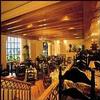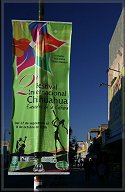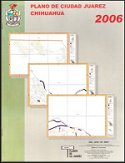Ciudad Juarez, Mexico History
Mission de Guadalupe
Calle Vicente Guerrero in front of the Plaza de Armas
Standing in front of the Mission is a statue of its founder, Fray Garcia de San Francisco. Born in Old Castilla, Spain, he came to the new World in 1629 and established the Mission of Our Lady of Guadalupe (1659) among the Manso Indians at the Pass of the North, a strategic location along the developing El Camino Real.
The bronze sculpture in front of the mission is a small replica of the one located in downtown El Paso. It depicts Fray Garcia in the act of building his mission. In his right hand he holds the lintel bean carved by the Manso Indians and bearing the name of the mission and year of its founding At his feet is a cluster of grapes in a Manso basket, which represents the viticulture and agriculture which he introduced into the area.
In December 8, 1659, Fray Garcia de San Francisco, accompanied by Fray Juan de Salazar and ten families of Christian Indians, built a provisional oratory out of branches and mud and a monastery with a roof of straw. On January 5, 1662, the New Church of the Mission of Our Lady of Guadalupe was inaugurated. One hundred natives were baptized that day.
Fray Garcia, after 12 years at the Pass, returned to minister among the Piro Indians of Senecu Mission, near modern Socorro, New Mexico, until his death on January 22, 1673.
Guadalupe Mission is the mother of the El Paso Valley Missions. To the tired traveler along the Camino Real, it was an important stop for food and rest. During the 1680 Pueblo Revolt in New Mexico, over 2500 Spanish refugees and displaced Indians received food and shelter at the mission. Until 1692, the pass of the North was the most northern outpost in in colonial Spain in the New World.
Constructed solely of adobe, the thickness of its walls can be appreciated at the main and side doors. These doors with their simple portico and Spanish colonial oval windows known as “Ojo de Buey” (Bull’s Eye), have been recently restored following the original sketches. The ceiling stands out for its artistic quality. The missionaries came from the Iberian Peninsula where an Arabic influence can be seen in civil and religious buildings. At the Mission of Guadalupe, one can appreciate the Indian elements in the rectangular decorations, the braiding, the circular stairs, the toothed profiles and the serpent pallets carved into each one of the ceiling rafters, sacristy doors, candlesticks, lectern, and the side chapel.
At the center, the church has a stone altar installed during the last restoration (1968-71). Under this altar lie the remains of the first settlers. The floor is flagstone. The choir, at the back of the church, is made of wood and is supported by two elegant carved wood columns crowned by a wide capital. The entrance door to the choir is sealed for its protection but one can admire the work on the door since it is one of the original doors of the mission. At the head of the altar is a panel with the image of the Virgin of Guadalupe in a finely carved wood and glass niche. The entire building is seventeenth century Mexican Baroque which includes the Indian motifs.




